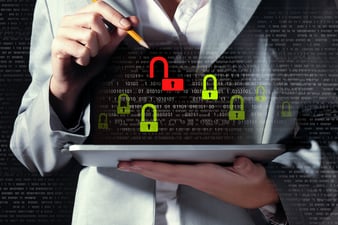Cybersecurity is not always easy to understand, as the threat landscape is constantly changing. We've put together a cybersecurity glossary to help clarify common terms.
Cybersecurity Glossary: 23 Tech Terms to Know
-
Cyber Attack
An attempt to gain illegal access to a computer or computer system for the purpose of causing damage or harm. [source]
-
Cyber Insurance
A contract that an individual or company can purchase to help mitigate the financial risks associated with conducting business and transactions online. [source]
-
Cybersecurity
Measures taken to protect a computer or computer system against unauthorized access or attack. [source]
-
Cybersecurity Lifecycle Framework (CLF)
Compugen’s Cybersecurity Lifecycle Framework (CLF) is a layered security solution and service approach crafted from internally recognized industry standards and frameworks. CLF is designed to guide a company through the continuous process of detecting, preventing, analyzing, and responding to information security threats. [source]
-
 Data Breach
Data BreachUnauthorized access and retrieval of sensitive information by an individual, group, or software system. [source]
-
Data Integrity
The property that data is complete, intact, and trusted and has not been modified or destroyed in an unauthorized or accidental manner. [source]
-
Hacking
The act of compromising digital devices and networks through unauthorized access. [source] -
Incident Response
The practice of recovering from a security breach once it has been detected. [source]
-
Malware
Software that compromises the operation of a system by performing an unauthorized function or process. [source]
-
Multi-Factor Authentication
A security mechanism in which individuals are authenticated through more than one required security and validation procedure. [source] -
Penetration Testing
A simulated attack designed to pinpoint risk and exposure.
-
Personally Identifiable Information (PII)
Information that, when used alone or with other relevant data, can identify an individual. [source]
-
Phishing
A method of identity theft that relies on individuals unwittingly volunteering personal details or information that can then be used for nefarious purposes. It is often carried out through the creation of a fraudulent website, email, or text appearing to represent a legitimate firm. [source]
-
Ransomware
Malware that requires the victim to pay a ransom to access encrypted files. [source]
-
Social Engineering
The act of exploiting human weaknesses to gain access to personal information and protected systems. Social engineering relies on manipulating individuals rather than hacking computer systems to penetrate a target’s account. [source]
-
Spoofing
Faking the sending address of a transmission to gain illegal entry into a secure system. [source]
-
Spyware
Software that is secretly or surreptitiously installed into an information system without the knowledge of the system user or owner. [source]
-
SSL Certification
The process of providing Secure Sockets Layer (SSL) certificates for secure online transactions. [source]
-
Trojan Horse
A computer program that appears to have a useful function, but also has a hidden and potentially malicious function that evades security mechanisms, sometimes by exploiting legitimate authorizations of a system entity that invokes the program. [source]
-
Virus
A computer program that can replicate itself, infect a computer without permission or knowledge of the user, and then spread or propagate to another computer. [source] -
Vulnerability Assessment
An assessment to define, identify, and prioritize vulnerabilities and their mitigation strategy based on the risk they pose. [source] -
Worm
A self-replicating, self-propagating, self-contained program that uses networking mechanisms to spread itself. [source]
-
Zero-Trust
A network security philosophy that states no one inside or outside the network should be trusted unless their identification has been thoroughly checked. [source]

.png)